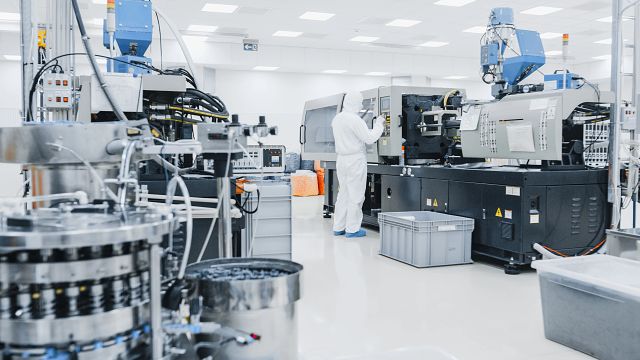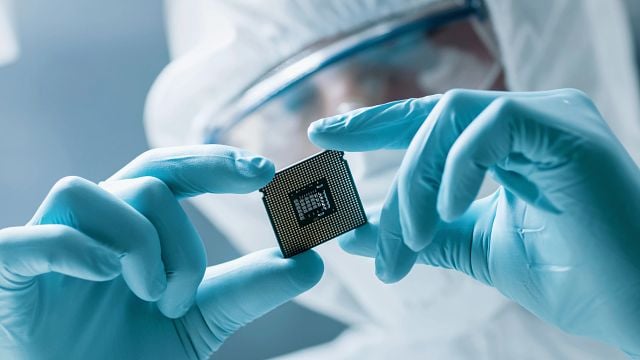Ensuring Measurement Compliance in the Semiconductor Industry

Introduction
In the semiconductor industry, precision and accuracy are paramount. Engineers across various disciplines—hardware, software, validation, and design—rely heavily on accurate measurements to ensure the quality and reliability of their products. This blog explores the essential link between measurement compliance and the use of properly calibrated measurement equipment, highlighting the importance of Tektronix Factory Verified Calibration Services.
The Importance of Measurement Compliance
Measurement compliance in the semiconductor industry is not just a regulatory requirement but a cornerstone of product quality and reliability. Compliance ensures that all measurements adhere to industry-specified standards and regulations, which is critical for maintaining the integrity of semiconductor devices. Accurate measurements are essential for design validation, quality control, and process optimization.
Design Validation: Accurate measurements are crucial during product development to validate design specifications. Engineers must ensure that their prototypes meet all required parameters, as deviations can lead to significant issues down the line.
Quality Control: Before products reach the market, they must be verified to meet stringent quality standards. Accurate measurements ensure that each product performs as expected, reducing the risk of defects and enhancing customer satisfaction.
Process Optimization: Accurate measurements are vital for fine-tuning manufacturing processes. By ensuring that every step of the production process is optimized, manufacturers can improve efficiency, increase yield, and reduce waste.
Situations Requiring Properly Calibrated Measurements
Properly calibrated measurement equipment is crucial in various scenarios within the semiconductor industry:
- Product Development: Ensures prototypes meet required parameters.
- Manufacturing: Maintains product quality and reliability.
- Testing and Validation: Ensures accuracy of test results.
- Compliance Audits: Demonstrates adherence to industry standards.
Risks of Not Having Calibrated Equipment
Using uncalibrated equipment can lead to significant risks, including:
- Design Flaws: Resulting in product failures and increased costs due to rework and recalls.
- Non-Compliance: Leading to regulatory penalties and loss of certification.
- Reduced Product Quality: Causing variations in product performance and customer dissatisfaction.
Benefits of Having Calibrated Equipment
Investing in properly calibrated equipment offers numerous benefits:
- Documented Accuracy: Ensures traceable measurements, better design validation, and quality control.
- Regulatory Compliance: Helps avoid penalties and maintain certifications.
- Improved Product Quality: Leads to higher-quality products and enhanced customer satisfaction.
- Operational Efficiency: Minimizes downtime and optimizes manufacturing processes.
Calibration in the Semiconductor Industry
Calibration in the semiconductor industry involves adhering to specific standards to ensure measurement accuracy. These standards include ISO/IEC 17025, which specifies the general requirements for the competence of testing and calibration laboratories.
Challenges in Calibration: Ensuring accuracy across a wide range of test points is a common challenge. For example, oscilloscopes used in semiconductor testing may require calibration at multiple points, including low voltages and high frequencies. Tektronix Factory Verified Calibration Services address these challenges by offering comprehensive calibration across all relevant test points.
Troubleshooting Best Practices: Maintaining measurement accuracy involves troubleshooting common calibration problems. If equipment is found to be out of tolerance, it should be recalibrated immediately. Regular maintenance and inspection of calibration equipment can prevent problems before they arise.
Tips for Calibrating Equipment in the Semiconductor Industry

To maintain the accuracy and reliability of measurement equipment, follow these best practices:
- Regular Calibration: Schedule periodic calibrations to identify and correct deviations.
- Use Accredited Services: Ensure compliance with industry standards by using ISO/IEC 17025 accredited services.
- Maintain Detailed Records: Keep detailed records of all calibration activities for audit purposes.
- Train Personnel: Ensure staff understand the importance of calibration and know how to handle the equipment correctly.
Conclusion
Ensuring measurement compliance in the semiconductor industry is critical for maintaining product quality, reliability, and regulatory compliance. By investing in properly calibrated equipment and following best practices, companies can enhance their operational efficiency and customer satisfaction.
For more detailed insights and to learn how Tektronix Factory Verified Calibration Services can help you maintain measurement compliance, download our comprehensive whitepaper today.


